Live on the homepage now!
Reader Supported News
The following images, focused on politics and elections, highlight individuals who became symbols of this tension. Some of the subjects spoke up at crucial moments for the values of American liberty, yet were willing to disregard others in the pursuit of their own crusades. Others questioned the very nature of democracy. Each image is worth a close look as we struggle with these opposing currents today.
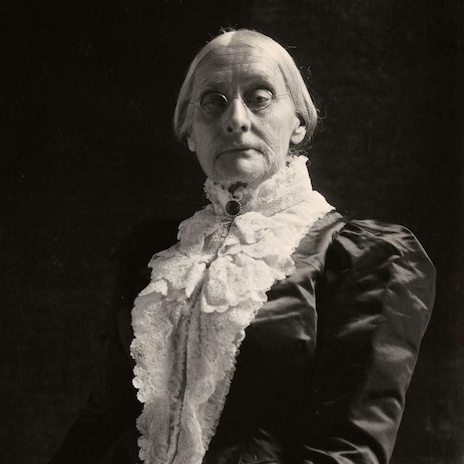
Washington, D.C., 1900
Susan B. Anthony
Photograph by Frances Benjamin Johnston
By 1900, Susan B. Anthony, the guiding light of the women’s-suffrage movement, had been in public life for about half a century. Anthony and her colleagues, despite being steeped in abolitionism, were often derogatory toward Black people and reluctant to put women’s suffrage behind emancipation. In the 1872 election, Anthony illegally cast a vote for the incumbent, Ulysses S. Grant, a former Union general and the Republican president overseeing Reconstruction in the South. She was arrested for the act and fined $100. She died in 1906, 14 years before the Nineteenth Amendment gave women the right to vote.
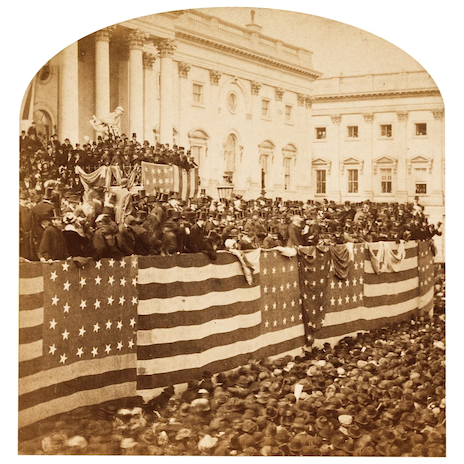
Washington, D.C., 1877
Inauguration of Rutherford B. Hayes
Photograph by Mathew Brady
In 1877, Mathew Brady, the great photographer of the Civil War, captured the inauguration of Rutherford B. Hayes. The Republican candidate had staunchly opposed slavery prior to the Civil War, but thanks to the backroom deal that brought him to power, Hayes’s presidency repudiated Reconstruction. He had lost the popular vote to the New York Democrat Samuel Tilden and needed more electoral votes. Allegedly, the Compromise of 1877 offered him those votes if he agreed, as president, to withdraw troops from parts of the South, where they were protecting freed enslaved people and their supporters from ex-Confederate and Ku Klux Klan violence. Soon thereafter, Jim Crow came knocking on the door.
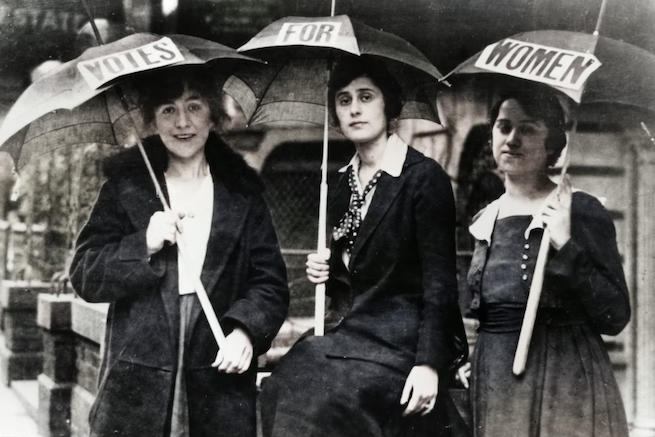
Baltimore, Maryland, 1912
Democratic National Convention
Photographer unknown
The Democratic National Convention of 1912 assembled in Baltimore and nominated Woodrow Wilson as the party’s candidate. Wilson went on to serve two terms as president, during which he began to publicly support women’s right to vote. He was the first president to screen a film in the White House; he chose the racist The Birth of a Nation, which offers a distorted account of the assassination of President Abraham Lincoln and the rise of Ku Klux Klan.
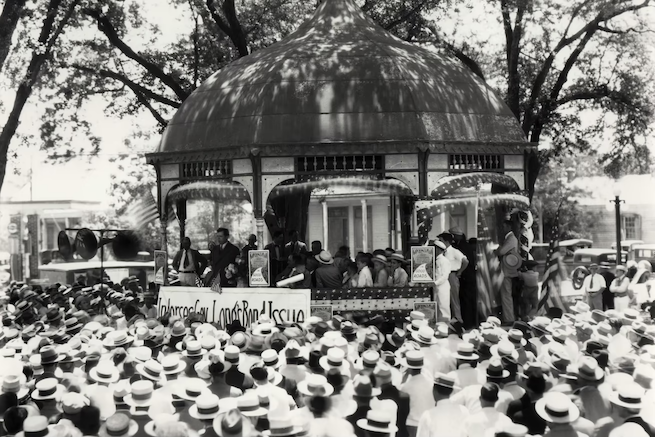
Leesville, Louisiana, 1932
Huey Long
Photographer unknown
Populism is a forceful current in American politics. This is perhaps best illustrated by Huey Long, the Louisiana governor who later became a senator, who called for a redistribution of wealth but also held himself above the law, showed questionable ethics, and more than flirted with authoritarianism. Yet he was hugely popular in his home state and across the country. Later described as the “most colorful, as well as the most dangerous man to engage in American politics,” Long was corrupt until his untimely end—but he kept the common man on his side.
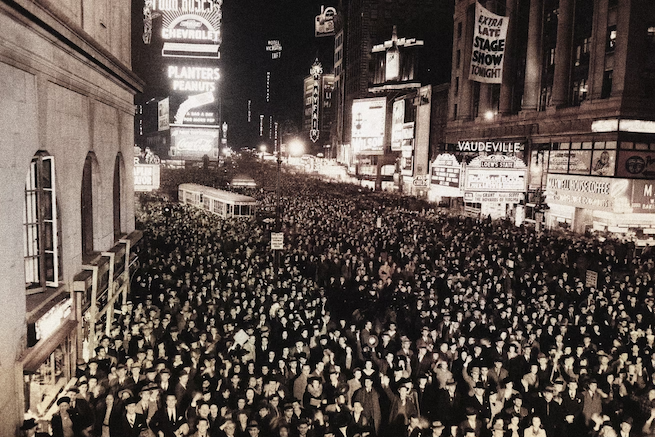
New York City, 1940
Times Square
Photographer unknown
On November 5, 1940, a massive crowd waited for election news in Times Square. That night, they found out that Franklin D. Roosevelt had defeated the Republican businessman Wendell Willkie and been reelected for an unprecedented third term in office.
War was escalating abroad. In Europe, Axis powers had invaded Albania, Belgium, Denmark, Finland, France, Greece, the Netherlands, Norway, Poland, and parts of North Africa. The Japanese controlled large portions of China and were expanding their empire in Southeast Asia and the Pacific. The Nazis were dropping bombs on London; they were also building concentration camps.
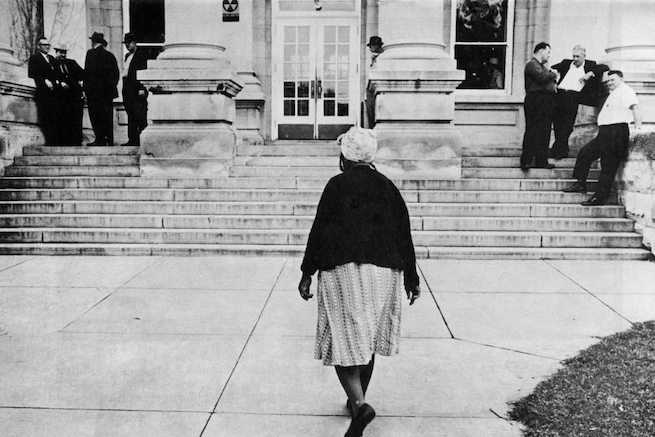
Greenwood, Mississippi, 1964
Leflore County Courthouse
Photographer unknown
It took courage for this unknown woman to walk into the Leflore County Courthouse in Greenwood, Mississippi, where she may have registered to vote. American democracy is a personal challenge that each of us must meet.
Follow us on facebook and twitter!
PO Box 2043 / Citrus Heights, CA 95611



No comments:
Post a Comment
Note: Only a member of this blog may post a comment.